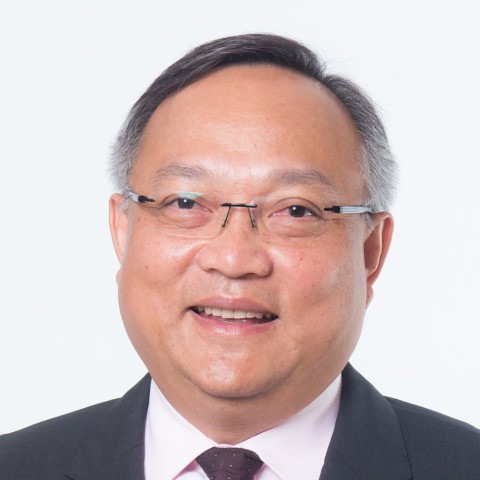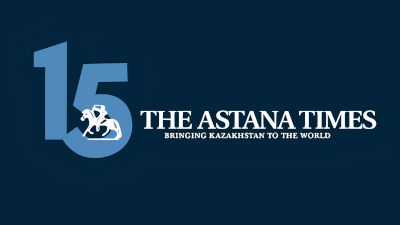The global pandemic has claimed hundreds of thousands of lives and left millions more suffering from economic devastation. While the battle against the disease will be long-drawn, we must plan for the future, for the calamity will surely pass.

A key focus for many leaders around the world is how to restart the global economy, which will look very different from the past. At the heart of this question is the daunting challenge of re-establishing supply chains that have been disrupted and reviving trade that has fallen sharply off the cliff.
This question is particularly pertinent for Singapore as trade is a lifeblood for our economy.
The more I ponder this question, the more I am convinced that there is scope for Singapore and Kazakhstan to work closer together.
As Singapore’s Ambassador to Kazakhstan, I often get asked by Singaporeans what is there in this Central Asian country over 6,000 km away and why people should pay attention to it.
There is some truth to the sentiment. Businesses looking to expand overseas often look to their immediate region first due to cultural similarities and ease of being close to home.
The business landscape in Singapore today is also such that companies often opt to enter mature markets, instead of taking the riskier step of being a first mover in emerging markets, like our predecessors did.
But in a challenging post-Covid world, that is precisely what Singaporeans have to do, and Kazakhstan offers us new opportunities.
At first glance, Singapore and Kazakhstan may not look to have much similarities. But not many know that Singapore and Kazakhstan share a unique relationship.
Former Prime Minister Lee Kuan Yew paid his first visit to Kazakhstan in September 1991, shortly after the collapse of the Soviet Union. Kazakhstan’s first president, Mr Nursultan Nazarbayev, had invited Mr Lee to advise the country on possible reforms to turn its economy to a free market.
Mr Lee had recognised then that the dissolution of the Soviet Union would give rise to a new world order. He also saw in resource-rich Kazakhstan its aspirations for economic development. If Central Asia was to grow in importance, Singapore would do well to form linkages with that part of the world.

Former Prime Minister of Singapore Lee Kuan Yew met with Kazakhstan’s First President Nursultan Nazarbayev during his first visit to Kazakhstan in September 1991. This visit gave a start to regular political contacts and active economic cooperation between the two countries. Photo credit: Todayonline.com.
On the other hand, Kazakhstan found in Singapore — a small country with no hinterland that had managed to successfully plug itself into the global world and stayed relevant over the years — an economic and political model it could take notes from.
In fact, I am often struck by the sense of vulnerability I see in the Kazakhs.
They worry every day that they are not relevant to the world, and fight hard to be recognised and to be plugged in. Despite the size of their country — Kazakhstan is almost 3,800 times the size of Singapore and larger than the entire Western Europe — they do not take anything for granted.
I would therefore like to invite more of my Kazakh friends to consider working with Singapore beyond looking at us as a model for benchmarking. There are ample opportunities to do more together, and new areas to explore collaboration, particularly as we transit out of the uncertain post-Covid era.
For instance, Kazakhstan and Singapore occupy strategic locations in our respective regions.
We can be key regional transport and transit hubs, including as part of the Belt and Road Initiative (BRI). Kazakhstan could tap Singapore’s excellent connectivity, digitally-ready economy and strong healthcare system, to offer innovative digital and medical solutions in the post-Covid environment.
This could be done as part of China’s “Health Silk Road”, where Kazakhstan’s accessibility to the Chinese and Eurasian markets offers a strong advantage.
CrimsonLogic, an e-government solutions provider, is already exploring opportunities along the BRI’s “Digital Silk Road”.
The Singapore company had previously helped launch Kazakhstan’s eJustice system as part of the country’s ongoing drive towards digital transformation.
You may also be familiar with other Singapore companies in Kazakhstan such as Surbana Jurong, Meinhardt and Ascott, to name a few. To date, there are over 130 Kazakh companies operating in Singapore.
Mindset Shift
Kazakh businessmen will also find it easy to work with Singaporeans as both countries deeply understand the need to stay open and connected to the world, even as other countries turn inwards amid growing anti-trade rhetoric that is exacerbated by Covid-19.
Singapore’s commitment to maintaining open and connected supply chains is made clear in a recent joint ministerial statement with six other countries.
With Kazakhstan lifting its bans and quotas on the export of food products starting from June 1, I hope our Kazakh partners can work alongside us in ensuring supply chain connectivity.
As for Singapore businesses, a mindset shift is perhaps necessary. It is time for Singapore businesses to rethink their options and set their sights further from home as regional markets become more mature and hence more competitive.
Young Singaporeans should also move out of their comfort zones and explore beyond our immediate neighbourhood.
Kazakhstan, which has undertaken deep economic reforms to improve its investment climate in a bid to woo foreign investors, presents us with an opportunity.
In 2018, Kazakhstan set up the Astana International Financial Centre (AIFC) to court top financial players in areas such as financial technology and asset management.
It is an ambitious dream, but the Kazakhs know that the alternative of sitting and waiting for investments to come is worse off.
The AIFC, together with the country’s capital of Nur-Sultan, are aspirational symbols holding the promise of what Kazakhstan could be in the future.
Just as Singapore has become a gateway for foreign companies to launch into Southeast Asia, Kazakhstan can be a node for Singapore companies keen to invest in Central Asia or even the Eurasian market.
To put it in context, Kazakhstan has a population of 18 million, while the Eurasian market has over 180 million people. The region is also resource-rich. Kazakhstan alone holds the world’s 12th largest oil reserve and the world’s 14th largest gas reserve.
So this is my answer to those who ask: What is there in Kazakhstan, and why should I care?
Because if we want to survive and thrive, we have to constantly adapt and evolve, rethink the status quo and ask ourselves why not.
And Kazakhstan, with its aggressive fighting spirit and friendly ties with Singapore, holds plenty of opportunities for Singapore.
As global growth slows, Singapore entrepreneurs will need to be pioneers and mavericks — much like our predecessors who ventured into regional markets in the early days, when few did.
They did so out of sheer obstinance, and they knew that they did not try, they would live to regret it. And even if they failed, there was no shame in picking themselves up and restarting.
Likewise, it may seem that there are no compelling reasons to look to Kazakhstan and Central Asia, or even Eurasia, for business opportunities.
But companies which do so, and succeed, would have built a lifeline for themselves for the next 50 years.
Author is Zulkifli Baharudin, Singapore’s non-resident Ambassador to Kazakhstan.
This article was originally published on Todayonline.com website.


